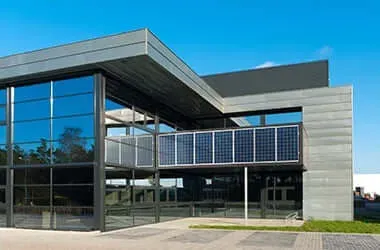Innovative Solar Panels Achieving 50 Percent Efficiency for Sustainable Energy Solutions
The Future of Solar Energy Achieving 50% Efficiency in Solar Panels
As global efforts to combat climate change intensify, the importance of renewable energy sources becomes ever more evident. Among these sources, solar energy stands out due to its abundance and sustainability. Traditional silicon-based solar panels have dominated the market, typically operating with an efficiency of around 15-22%. However, the pursuit of efficiency has led researchers to focus on solar panels that can potentially achieve 50% efficiency. This ambitious goal could revolutionize the solar energy sector, making clean energy more accessible and efficient than ever.
Understanding Solar Panel Efficiency
Solar panel efficiency measures the percentage of sunlight that can be converted into usable electricity. The efficiency of traditional panels is constrained by several factors, including the inherent properties of the materials used and the design of the cells themselves. Silicon, the most commonly used material in solar panels, has a theoretical maximum efficiency of around 29%, which limits the potential maximum effectiveness of standard solar technology. To breach this limit and reach higher efficiency levels, researchers are exploring advanced materials and innovative designs.
Breakthrough Technologies in Solar Panels
Recent advancements in solar technology suggest that achieving 50% efficiency is not merely a distant dream but a tangible goal. Here are a few promising approaches
1. Multi-Junction Solar Cells One of the most compelling technologies is the development of multi-junction solar cells. These cells stack multiple layers of different semiconductor materials, each designed to capture a different range of the solar spectrum. By utilizing multiple layers, researchers can absorb more sunlight and convert it into energy, potentially elevating efficiency levels far beyond those of conventional cells. Some experimental multi-junction cells have already reached efficiencies exceeding 45%, indicating a bright future for this technology.
2. Perovskite Solar Cells Perovskite solar cells are another exciting development in solar technology. These cells utilize a unique crystal structure that allows for greater light absorption and flexibility in material selection. Recent research has shown that perovskite cells can achieve efficiencies around 25% in laboratory settings, and their ability to be produced at a low cost makes them an attractive option for mass production. With further advancements and stability improvements, perovskite cells could play a significant role in the path to 50% efficiency.
solar panel 50 efficiency

3. Concentrated Photovoltaics (CPV) Concentrated photovoltaics utilize mirrors or lenses to focus sunlight onto small, highly efficient solar cells. This technology can significantly enhance the amount of sunlight captured, leading to improved efficiencies. CPV systems have demonstrated efficiencies exceeding 40% in controlled environments, showcasing the potential for higher performance under optimal conditions.
4. Bifacial Solar Panels Bifacial solar panels are designed to capture sunlight from both the front and the rear sides of the panel. By utilizing reflected sunlight from the ground and surrounding surfaces, bifacial panels can enhance overall energy capture. Although their efficiency can vary based on installation conditions, studies suggest that they can operate at higher efficiencies compared to traditional single-sided panels.
Challenges to Overcome
While the prospect of achieving 50% efficiency in solar panels is exciting, there are challenges that need to be addressed. For one, the complexity and cost of producing advanced solar technologies, such as multi-junction and perovskite cells, must be reduced to make them commercially viable. Moreover, the long-term durability and stability of these newer materials remain under investigation to ensure they can withstand environmental conditions and maintain performance over time.
The Impact of Enhanced Efficiency on Renewable Energy Adoption
If solar panels can indeed reach 50% efficiency, the implications for renewable energy adoption would be profound. Higher efficiency means more electricity generated per unit area, reducing the need for extensive solar farms and making solar installations feasible in urban settings. This development would not only facilitate the transition to clean energy but could also significantly lower electricity costs, making solar power more accessible to consumers.
In conclusion, the pursuit of 50% efficient solar panels stands as a testament to human ingenuity and innovation. With continued investment and research, we are on the brink of a solar energy revolution that could reshape our energy landscape, providing a sustainable and effective solution to our growing energy demands and the looming threat of climate change. The journey is fraught with challenges, but the potential rewards make it an endeavor worth pursuing.
-
Unlocking Energy Freedom with the Off Grid Solar InverterNewsJun.06,2025
-
Unlock More Solar Power with a High-Efficiency Bifacial Solar PanelNewsJun.06,2025
-
Power Your Future with High-Efficiency Monocrystalline Solar PanelsNewsJun.06,2025
-
Next-Gen Solar Power Starts with Micro Solar InvertersNewsJun.06,2025
-
Harnessing Peak Efficiency with the On Grid Solar InverterNewsJun.06,2025
-
Discover Unmatched Efficiency with the Latest String Solar InverterNewsJun.06,2025







